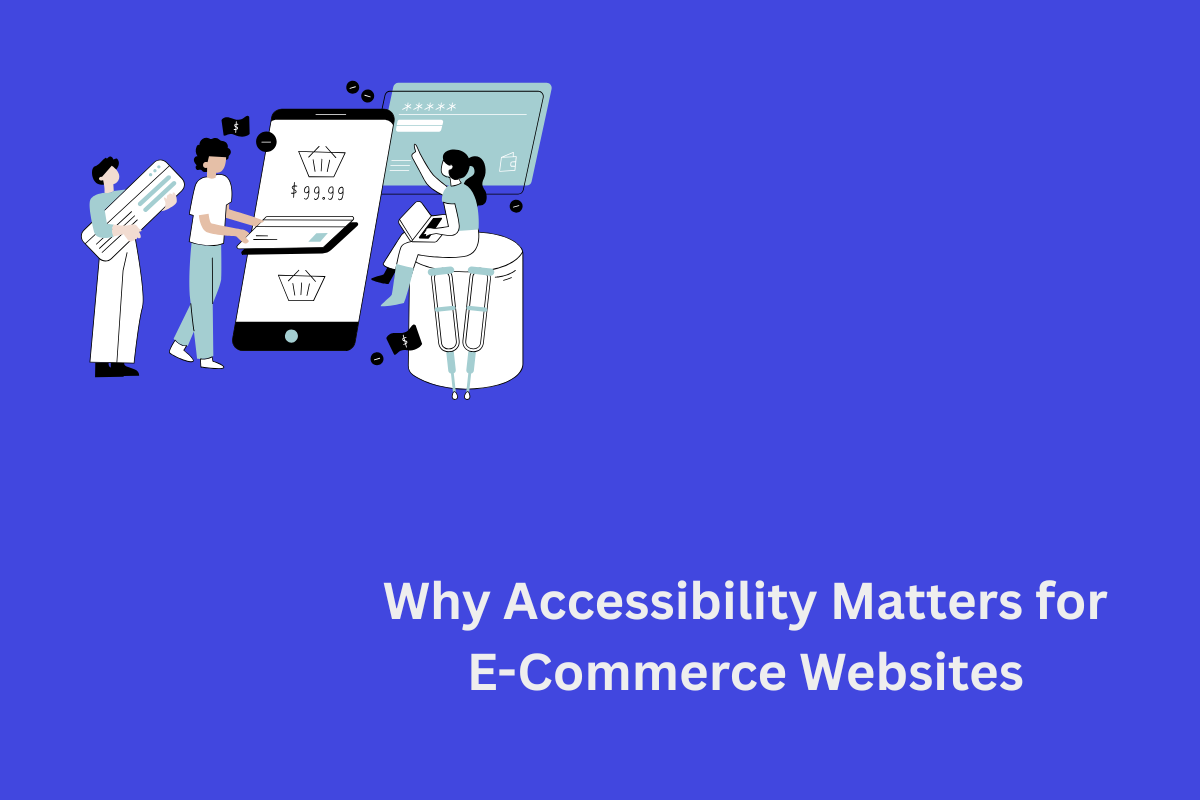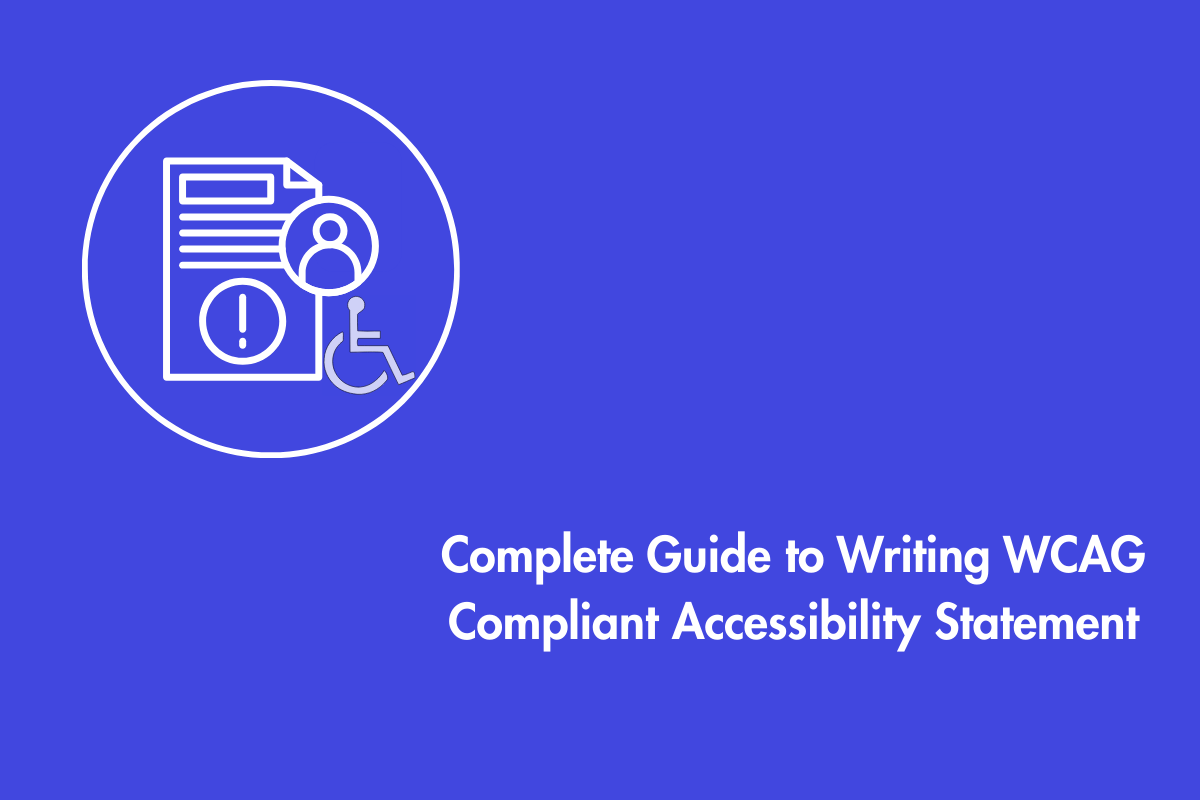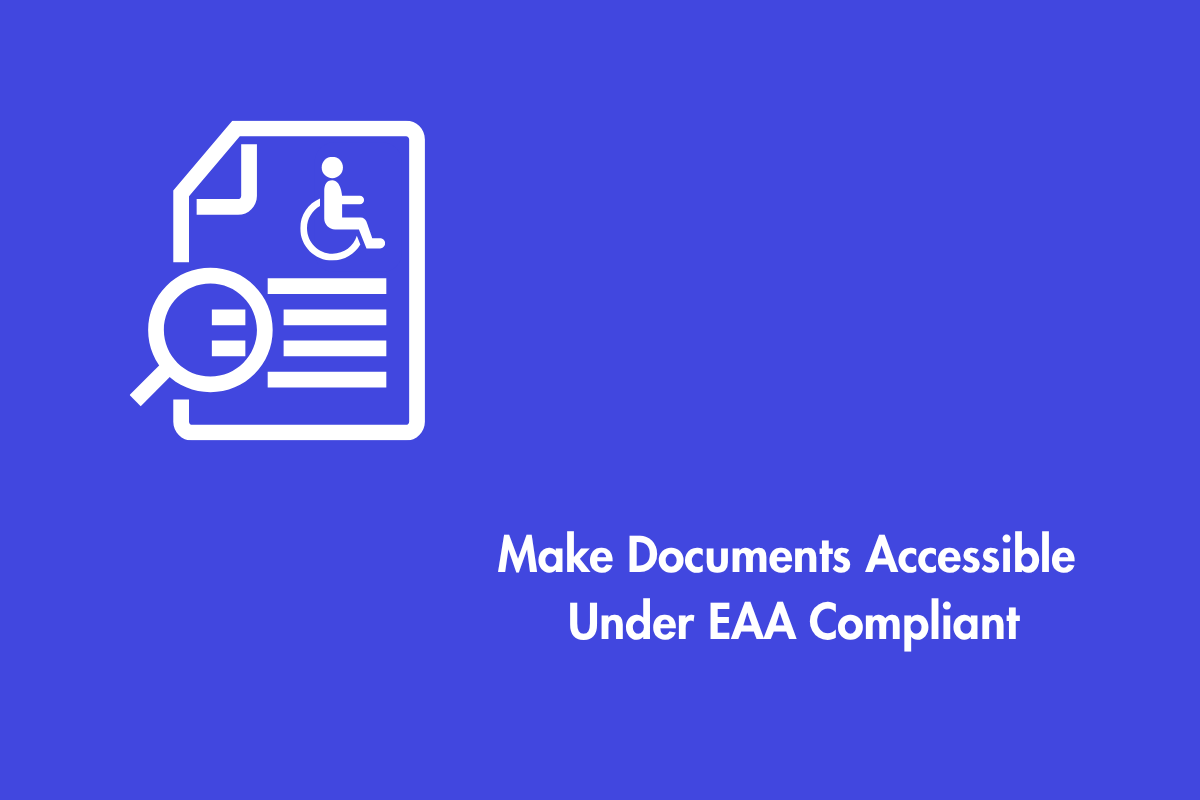In this day and age of complete digital takeover, e-commerce business establishments are constantly exploring innovative strategies to boost sales and enhance the overall customer experience. While this is essential, the businesses overlook an important factor web accessibility.
What was earlier considered to be an industry secret is now widely recognised that making online establishments and outlets accessible to all, including people with disabilities, can skyrocket sales numbers and reach. Not only that, the trust and loyalty factor will also soar among customers.
Let us take a closer and finer look at how web accessibility can greatly benefit e-commerce platforms.
Table of Contents
- 1 What is Web Accessibility?
- 2 How Does Web Accessibility Improve Customer Experience?
- 3 Why is Web Accessibility crucial for E-commerce?
- 4 How Can E-commerce Businesses Improve Web Accessibility?
- 5 How Web Accessibility Drives Sales and Conversion Rates?
- 6 Why Should E-commerce and Businesses Care About Accessibility?
- 7 Trending News on Web Accessibility in E-commerce
What is Web Accessibility?
The Web is inherently built to serve everyone, regardless of their hardware, software, language, location, or abilities. When this goal is achieved, the Web becomes accessible to people with a wide variety of hearing, mobility, visual, and cognitive differences.
The Web Content Accessibility Guidelines (WCAG) provide comprehensive technical instructions for ensuring digital content, like websites and apps, is accessible to people with disabilities. They help individuals and organisations remove barriers that might otherwise prevent users from accessing or interacting with digital content effectively.
WCAG success criteria are designed to help website owners comply with accessibility regulations such as the ADA and Section 508. Ignoring these guidelines can lead to significant accessibility issues.
How Does Web Accessibility Improve Customer Experience?
Web accessibility improves the customer experience by ensuring websites are user-friendly for all individuals, including those with disabilities. Accessible sites allow users to easily navigate, comprehend, and engage with content, resulting in higher satisfaction and increased interaction. Here are a few important points to note:
Enhances Usability for All Users
Websites that abide by the accessibility norms are easier for everyone to use. Features like clear text, simple navigation, and descriptions for images help all users find what they are looking for and complete their purchases. This results in higher customer satisfaction and encourages repeat visits.
Builds Customer Trust and Loyalty
When customers access an accessible website, they feel valued. This, in turn, helps strengthen trust in the brand and motivates them to become loyal patrons. Businesses that prioritize accessibility clearly show their target audience and all customers that they are committed to addressing everyone’s needs.
By prioritizing e-commerce ADA compliance, companies can not only avoid legal risks but also build a loyal customer base that values accessibility.
Reduces Bounce Rates and Increases Engagement
Online representations that are harder for the user to browse and engage with can often lead to unwanted frustrations that can sometimes increase the bounce rate for the site in question. It is only natural for the user to spend more time on the website engaging with the content and products, thereby increasing the chance of making a sale.
Establishes Compliance with Legal norms
In many countries today, complying with accessibility standards is mandated by law. Failure to meet these requirements can lead to legal penalties and fines, as accessibility has become a matter of social responsibility and public reputation
Broadens Market Reach
Statistics demonstrate that 15% of the global population has some type of disability. Ensuring a website is accessible allows businesses to connect with a broad and frequently underserved audience. This inclusivity can lead to more sales and help build customer loyalty.
Improves SEO
Accessible websites usually have cleaner code, a vivid and easily comprehensible structure, and helpful content, which helps them rank better in search engine results. This increases the website’s readership, making the content popula,r thereby boosting sales.
Why is Web Accessibility crucial for E-commerce?
Creating inclusive digital experiences not only reflects a company’s core values but also promotes sustainable growth and helps build a more inclusive society. There are several compelling reasons why making accessibility a priority is both a smart and ethical decision for businesses. Here are a few:
Ethical Responsibility
Accessibility is rooted in fairness and equality. Making digital spaces usable for everyone demonstrates a brand’s commitment to ethical conduct and inclusivity.
Competitive Advantage
Accessible websites stand out in a crowded market by appealing to a broader audience, including users with disabilities, thereby enhancing brand differentiation.
Economic Opportunity
People with disabilities represent a significant yet often overlooked consumer group with strong purchasing power. Serving this market can lead to increased revenue and business expansion.
Technological Advancement
Implementing accessibility features requires adopting modern technologies and staying up-to-date with legal standards, which in turn enhances the website’s overall quality and user experience.
Social Impact
By prioritizing accessibility, businesses contribute to a more inclusive society. This not only elevates their public image but also fosters stronger customer loyalty through visible social responsibility.
How Can E-commerce Businesses Improve Web Accessibility?
To create an e-commerce website that is genuinely accessible to all users, including those with disabilities, you should implement several key strategies. Let’s start with understanding WCAG.
The Web Content Accessibility Guidelines, or WCAG in short, outline a set of standards that one has to keep up with for making websites accessible. Below are a few criteria under WCAG:
- Provide Alternative Text for Images: Providing straightforward, text-based descriptions for images helps individuals with hearing-related disabilities who rely on screen readers understand the content and purpose of those images. This ensures that all users can access and interpret the information, even if they cannot view the visuals directly.
- Ensure Keyboard Navigation: It is crucial to build in the functionality that all the artifacts on the website are reachable via the keyboard if the user wishes to get to them using the navigation keys, especially the tab button. This is crucial for users with motor impairments as they may be unable to access features that require mouse-only interaction.
- Offer Captions and Transcripts for Multimedia: Adding captions to videos and transcripts for audio helps people with hearing impairments access multimedia content.
- Clear, Readable Text: Use fonts that are easy to read with strong contrast against the background, improving readability for users with visual impairments.
- Accessible Forms: Design forms with clear labels, helpful instructions, and simple error messages to assist users with cognitive or visual challenges.
- Consistent Navigation Layout: Maintain a logical and consistent site structure to support users with cognitive disabilities in navigating your store.
- Descriptive Links: Use meaningful link text (e.g., “more information can be found in this blog post”) instead of vague phrases like “click here” to give context for screen readers.
- Responsive Design: Design your web application to be fully responsive, adapting seamlessly to different screen sizes from large desktops to small mobile devices.
- Content Structure and Headings: Organize content with clear headings and a logical layout to enhance navigation and comprehension for all users.
Font Size and Style: Use fonts with clear, distinct characters and adequate spacing, and allow users to adjust text size according to their preferences or needs. - Keyboard Navigation and Visual Focus Indicator: Enable users to navigate your web application using only a keyboard, and provide a clear visual cue to indicate which element is currently focused on the screen.
- Color Contrast: Apply high-contrast colors to make text and important information stand out against the background, using colors thoughtfully to prevent confusion.
- Strategic Use of Color: Select colors to convey specific meanings, such as red for warnings, green for success, blue for links, and yellow for caution or attention.
Conduct Accessibility Audits
Regularly assess a website to spot accessibility issues. Use tools and expert reviews to find areas that need improvement.
Testing with Assistive Technologies
Regularly test your website using screen readers and other assistive tools to identify and fix accessibility barriers.
Test with Real Users
Get feedback from people with disabilities to identify real-world accessibility challenges. This helps improve the website’s overall usability.
Provide Accessible Customer Support
Provide customer support options that meet different needs, such as text support, chat, or video calls with sign language interpreters.
Stay Updated
A developer must know the latest set of guidelines that has been outlined by the statutory bodies so that the website can stay updated with the latest accessibility norms and functionalities that enable them.
Continuous Testing and Feedback
Keep testing and gathering user feedback to detect and resolve new accessibility challenges promptly. Notably, 51% of people believe retailers should include people with disabilities in their website testing processes.
How Web Accessibility Drives Sales and Conversion Rates?
Accessibility not only ensures inclusivity for all customers but also drives key business metrics. Let’s explore how making your e-commerce site accessible can positively impact these critical areas:
Reduces Cart Abandonment
One of the main reasons shoppers abandon their carts is encountering usability issues that lead to frustration and eventually giving up. Simplifying the checkout process can significantly reduce cart abandonment and lead to more successful purchases.
For businesses aiming to increase their customer base and ensure an inclusive online shopping experience, e-commerce ADA compliance is necessary.
Increases Average Order Value (AOV)
Also known as AOV (Average Order Value), this metric reflects the average amount spent per order. Increasing AOV is entirely achievable by ensuring the website is accessible to everyone—especially individuals with disabilities, allowing them to navigate the content easily and add more items to their cart when the experience is seamless and inclusive.
Enhances Customer Lifetime Value (CLV)
It is only a natural tendency to return to an accessible website for a customer with a positive experience from the previous visit. This is how loyal, repeat customers are created—by delivering an exceptional and accessible user experience, thereby increasing the customer lifetime value.
Conversion rate
Digital accessibility plays a crucial role in improving conversion rates. By making your content accessible, you can reach over a billion people with disabilities, significantly expanding your potential audience. Accessible design also enhances the overall user experience features like alt text aid visually impaired users and improve search engine rankings.
Demonstrating a commitment to accessibility strengthens your brand’s reputation by showcasing inclusivity, which builds customer trust and loyalty. Importantly, ensuring accessibility helps you comply with legal requirements, protecting your business from legal issues.
Why Should E-commerce and Businesses Care About Accessibility?
Accessibility is a Growing Priority
More consumers are considering inclusivity when choosing where to shop. Research from the UK’s Digital Accessibility Centre reveals that 71% of people with disabilities abandon websites that are not accessible. Businesses run the risk of losing these clients to competitors if they don’t adhere to accessibility guidelines.
Increased Mobile Accessibility
Mobile commerce is rapidly becoming the preferred shopping method, especially for individuals with disabilities. If a website is not both mobile-optimised and accessible, it misses out on a large portion of potential customers.
Enhances the Image of the Brand
Companies that prioritise accessibility are regarded as socially conscious. This commitment can lead to stronger customer loyalty and positive word-of-mouth promotion.
Trending News on Web Accessibility in E-commerce
- Walmart’s Accessibility Revamp: Walmart is redesigning its online platform to comply with WCAG 2.1 standards, reflecting its dedication to inclusivity. (Source: Business Insider)
- Target’s Accessibility Efforts: Target is enhancing its digital accessibility, focusing on users with visual and hearing impairments. (Source: Target Newsroom)
- Rising Accessibility Lawsuits in 2025: Lawsuits related to web accessibility, such as those against Domino’s Pizza, are increasing, prompting more companies to prioritize compliance. (Source: Business Wire)
Wrapping Up
In today’s competitive market, consumers often favor brands with a clear mission. Retailers who create an inclusive shopping experience, through accessible content and support for users with disabilities, demonstrate a commitment to trust and community. An accessible website not only attracts a broader audience but also deepens the emotional bond between the brand and its customers, encouraging long-term loyalty.
If your e-commerce website isn’t accessible, now is the time to act. By concentrating on creating an inclusive website, you may increase your chances of success in the competitive online market.



